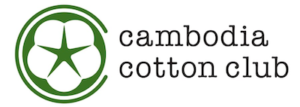Organic cotton first appeared on the Japanese market around 2000. At that time, the price was very high, and it was not something that could be afforded easily. My impression was that it was a reasonable price because it was grown with "no pesticides" and "organic fertilizers," as is the case with vegetables and fruits, and a lot of manpower and labor went into its cultivation. I remember that they were sold mainly by retailers who were passionate about environmental issues. I remember being surprised at the high prices, with some little shirts costing close to 10,000 yen.
I started growing organic cotton in Cambodia in 2008. I thought it would be better to have organic certification, so I contacted a major certification agency in France. The person in charge of the certification body stationed in Bangkok would not do a field survey and obtain a quote because "the area was too small". I think it was not worth it as a business.
After that, I did not pay much attention to organic cotton, but in 2010, I was surprised by the news distributed by a German journalist.
H&M (Sweden), the world's fourth largest organic cotton manufacturer, has discovered that its certified organic cotton may be contaminated with genetically modified cotton. Cotton made from genetically modified seeds cannot be certified as organic cotton.
It was shown that genetically modified cotton grown in India was distributed in the global market as "certified organic cotton" and that it may have been mixed into H&M's organic cotton products.
The falsification case was said to be an act of deception committed by some cotton farmers, but India's Department of Agriculture and Processed Foods Export Development was already aware of the falsification in April 2009. The Indian authorities have repeatedly asked Control Union, an organic certification organization headquartered in the Netherlands, to conduct on-site investigations.
However, the certifying agency, Control Union, certified genetically modified cotton as "organic cotton" and distributed it in large quantities on the world market.
Six months later, a sample sampling survey was conducted by a completely different research organization from the certification body, Control Union. It was there that the "organic cotton falsification case" was first discovered.
Following the revelation of the counterfeiting incident, Sweden's H&M claimed, "We have no evidence to believe that counterfeit organic cotton was used in our products. We will continue to use organic cotton in the future."
Involved in this counterfeiting case were, not only Swedish H&M, but also Dutch fast fashion company C&A was suspected of using falsified organic cotton.
H&M and C&A, who paid expensive certification fees to organic certification bodies, could be considered victims. But on the other hand, as an apparel company that sells organic cotton to consumers, was H&M completely unaware that the Indian Department of Agriculture and Processed Food Export Development had requested a field investigation? Did they know about it, but did not take it up?
Below are the world apparel rankings for organic cotton consumption in 2008.
5. Zara (Spain)
4. H&M (Sweden)
3. Nike (U.S.A)
2. C&A (Netherlands)
1. Wal-Mart (U.S.A)
Wal-Mart, the U.S.-based retailer that touts "everyday at a bargain price"-is the largest consumer of organic cotton. Fast fashion brands dominate the top of the list, except for Nike in sports shoes.
Organic cotton is supposed to be labor intensive, requiring a lot of manpower to grow. Why is it that organic cotton is lined up in large quantities in fast fashion stores, where one of the characteristics is "cheapness"?
( to be continued )
